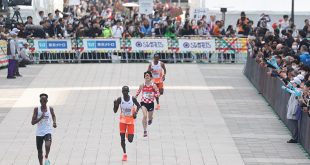
Survivors recall the terrible years as donors, government rebuild lives
Kampala, Uganda | IAN KATUSIIME | Akena Omwoya, in his mid-fifties, was already teaching at Lukome Secondary School in Gulu district when the Lords’ Resistance Army (LRA) insurgency peaked in 1995.
Gulu was the epicentre of the rebellion in which over 300,000 people were killed and two millions displaced over a 20-year campaign.
“Deadly battles were fought here,” Omwoya says pointing at the school compound in Bungatira sub-county, 12km away from Gulu town in northern Uganda, “1995 was a horrible time.”
Today, it is difficult to imagine the atrocities Amwoya speaks of. Instead, blocks of gleaming new classrooms are what catch the eye at Lukome SSS. But for survivors like Omwoya, the past remains vivid.
He says as most villagers fled to town for safety and protection, many children were abducted to become child soldiers and sex slaves for the rebels. Omwoya’s school went through two phases of displacement as the war intensified.
First the school relocated to Gulu town where all classes were under one roof at a Red Cross Centre. The one block housed classes from Senior 1 to 4 and the administration offices. Secondly, because so many other students from different schools had converged in town, they all joined the school making numbers so big teachers were overwhelmed. Although teachers from other schools would come in, Omwoya says, there were not more than four teachers at the school. And, as this was a period of chaos, there was no supervision. Teachers taught when they felt like.
“No one cared to track who did not show up the next day,” Omwoya recalls.
They stayed here for five years, until 2000 when the fighting between UPDF and LRA rebels subsided – briefly.
Ceasar Akena, the District Education Officer of Gulu, says not all schools went to town. Some went to protected areas and others in sub county headquarters like Patiko and Palaro.
He recalls ‘amalgamation schools’ like Gulu High School where numbers were overwhelming and lessons would begin late around 9am and end early by 3pm.
“You had to get clearance from security,” he says, “All this meant performance had to lag behind as we dealt in such circumstances.”
As a teacher and a former inspector of schools, the war left an imprint on Akena’s career.
“We moved with military escorts as we inspected schools to visit. The advantage is that schools were now in one location- the displaced centres and we would move with other organisations like UNICEF and World Food Programme.”
One of his colleagues lost his eyesight in an ambush by LRA rebels on his way to town after picking Primary Leaving Examination (PLE) papers from Awach Primary School.
Rebuilding shattered lives
Almost 20 years later, schools in Gulu district and most in northern Uganda, are struggling to shed off the spectre of war.
Akena, the District Education Officer, says besides the enormous rebuilding, software support in terms of psycho-social support has equally been immense.
“Most of our students were traumatised,” he says, “so teachers went through training of how to handle students who have been through such extraordinary experiences.”
NGOs like Save the Children introduced Peace Clubs and pupils and students were trained on how to handle conflicts in a peaceful manner. Some are still operating to this day.
 The Independent Uganda: You get the Truth we Pay the Price
The Independent Uganda: You get the Truth we Pay the Price


